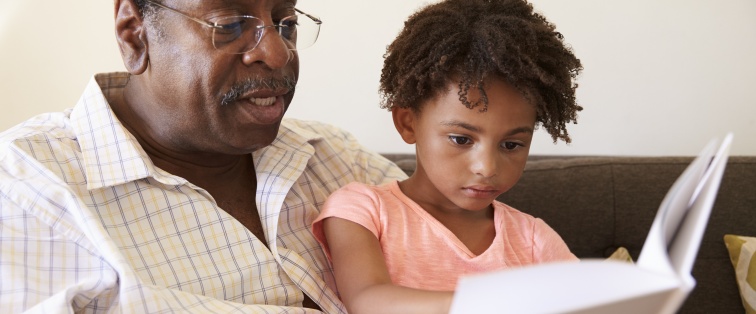Recognizing the Unique Needs of Children Raised by Grandparents and Relatives

As a pediatrician, I’ve had unique insight into the changing nature of families over the last 20 years. Whereas the early 2000s were marked by a growing number of single-parent families, the last ten years has seen unprecedented growth in the number of relatives – often grandparents, aunts or uncles – raising generations of children twice removed. By 2013, 7.8 million children, or nearly 10 percent of all children in the United States, resided in families in which the head of the household was a grandparent or other relative, and as many as 2.7 million children were being raised by their relatives in absence of their biologic parents.
Today, despite a paucity of national data, I have every reason to believe that these numbers are even greater. For pediatric physicians, this reinforces the notion that any discussion of family health must inevitably consider the needs of grandparents and other relatives who may be caring for them. As such, I am proud to join my colleagues at the American Academy of Pediatrics (AAP) in releasing a policy statement entitled, “Needs of Kinship Care Families and Pediatric Families,” in this month’s Pediatrics.
The statement, the first of its kind from the AAP, reveals evidence that kinship caregivers have become our best hope for raising children who have experienced trauma and are at risk for related health and social effects. Many of these children have faced parental substance use, abandonment, neglect and abuse before their relatives took them in. Popular convention often questions whether relatives of biologic parents who have abused or neglected their children share many of the same risks as the parents themselves.
However, more often than not, this “apple doesn’t fall far from the tree” suspicion could not be further from the truth. In reality, despite the challenges many families face around substance abuse, intergenerational trauma and mental health issues, I have confirmed in my own practice what the statistics reveal: families are complex webs, and there are often one or several siblings or grandparents who form the bedrock of those families, stepping up to raise children when other family members falter. The long-term outcome data (whether for health, schooling or employment) for the children they raise is equivalent if not better than children who are raised by non-relative foster parents, revealing to skeptics that in truth, blood may be thicker than water.
The vast majority of the amazing relatives who raise these children do so unbeknownst to the child welfare system, taking multiple children in despite their own health concerns and without extra income to put food on the table.
That these relatives are mostly raising children outside the child welfare system should not surprise us. In many cases, these families wish to preserve their privacy; in others, prohibitive regulations for foster parents make it difficult for relatives to be certified as foster parents, whether it be a remote criminal history on a family member within the household, or even simply the inability to guarantee a private bedroom for a child.
The AAP statement reviews the many ways we, as pediatric providers, can support kinship caregivers, who are salving the wounds of poverty and drug epidemics throughout our communities. Two concrete ways that pediatricians can delve deeper into the needs of these families are by:
- helping connect families to community programs that can insure that children and their families have access to needed services. Often, kinship parents enter into kinship arrangements unexpectedly and without preparation. Support services to help them enroll in Temporary Assistance for Needy Families (TANF) and other public benefits could help them cope with the stress of kindship caregiving.
- helping advocate with families on behalf of their children within schools.
Realizing that relatives who take on this responsibility are likely to be older, we should also be cognizant of any services they may require to address their age-related health concerns or the behavioral health concerns that accompany kinship care. Kinship parents are better able to care for children when they themselves are healthy, for which Medicaid can play a critical role. I’m concerned that recent discussions in Washington about the future of Medicaid could lead to disproportionate cuts not only for kinship parents, but for the children they care for. This brings added urgency to elevating this important group as Medicaid policy negotiations take place state to state.
But aside from how policies can impact kinship care, there is a more fundamental connection that we, as clinicians, need to forge in our own offices. Let’s avoid the transactional nature that health care visits have become, slow down and simply take the time upfront to acknowledge who the important caregivers are in the child’s life. Often we mistake the caregiver in the room to be the biologic parent, but through a few simple questions, we can unlock relationships with other relatives that are increasingly serving as the most important backstops for our high-risk children across the country, and in so doing, position ourselves to better impact their lives.

